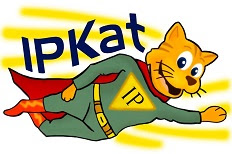
Chile: A watermelon with a heart
 Last week Chile celebrated the International Gastronomic and Food Industry (Encuentro Internacional de la Industria Gastronómica y Alimentaria (EIIGA 2014)). One of the parties that decided to participate with a stand and everything (including food!) was the Chilean Intellectual Property National Institute (INAPI).
Last week Chile celebrated the International Gastronomic and Food Industry (Encuentro Internacional de la Industria Gastronómica y Alimentaria (EIIGA 2014)). One of the parties that decided to participate with a stand and everything (including food!) was the Chilean Intellectual Property National Institute (INAPI).As expected, the event is visited by the most important representatives of the culinary and food industry at national and international level . INAPI’s aim was to support the ‘Origin Stamp’(Sello de Origen) by providing information and also offering tastings of domestic products. INAPI explains that the ‘Origin Mark’ recognizes and rewards the efforts of traditional producers. It attends to “encourage entrepreneurship and productive development in local communities” through providing recognition to their products by obtaining Geographical Indications ( GIs) , Designations of Origin ( DO) , Collective Marks and Certification Marks.
Finally, Mr Maximiliano Santa Cruz , INAPI’s National Director , says that with the ‘Origin Stamp’ there is hope “to foster, preserve, protect and improve the positioning of the work of artisans, fishermen, farmers and producers".
 In the same line, early this month INAPI granted a Collective Mark to the Association of watermelons from Paine – the collective mark being ‘Corazón de Paine’ (Paine’s heart). It is said that this process started in January 2013. However, the aim is to obtain a Geographical Indication (GI) for which they applied for in June. By the collective mark it is “expected to contribute to the preservation of agricultural biodiversity and tourism development of the municipality”.
In the same line, early this month INAPI granted a Collective Mark to the Association of watermelons from Paine – the collective mark being ‘Corazón de Paine’ (Paine’s heart). It is said that this process started in January 2013. However, the aim is to obtain a Geographical Indication (GI) for which they applied for in June. By the collective mark it is “expected to contribute to the preservation of agricultural biodiversity and tourism development of the municipality”.INAPI’s president informs that up to today there are only four Collective Marks registered in Chile. In this occasion the watermelons from Paine are said to be highly sweet and to have nutritional quality. The region of Paine is located in the metropolitan area, in the province of Maipo, and is mainly characterized by its agrarian culture.
Source INAPI.
















